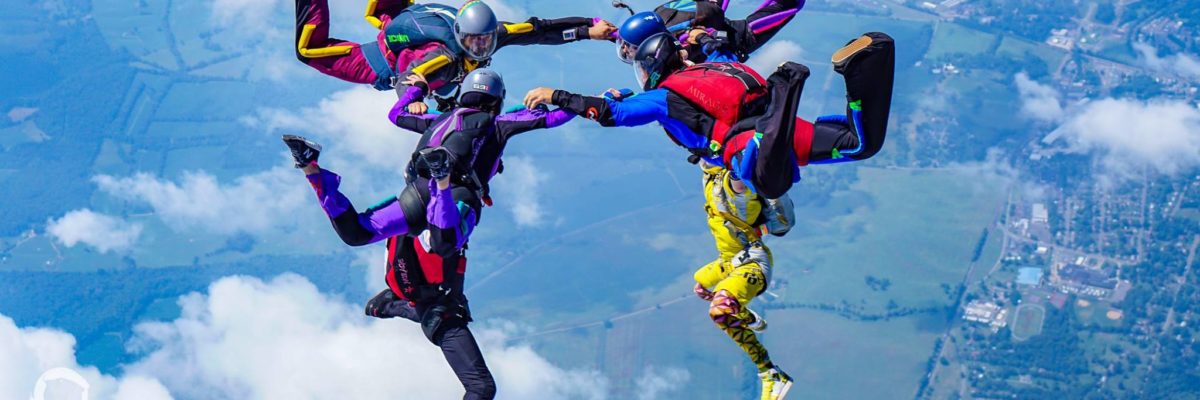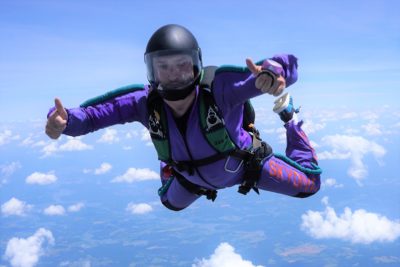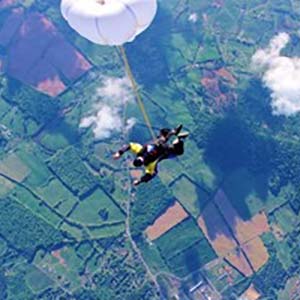
What Is Safer: Skydiving or Driving?
Friday, February 2, 2018
- Skydive Orange
- 2/02/18
- 0
- General
The answer seems like it would be pretty obvious, doesn’t it? I mean most of us drive nearly every day, and almost no one is shaking in their boots when they get behind the wheel. But the activity that is truly dangerous may surprise you.
We spend tons of time driving: to work, to the grocery store, and even to the dropzone! Because we have done it so often, it has become another part of the routine just as much as drinking a morning cup of coffee or brushing our teeth. This act we commit without half a thought, though, remains the number one cause of death for Americans and affects all socioeconomic categories, age groups, and ethnicities without discretion. No one, it seems is terrified of making their daily commute, but if you mention skydiving, the individuals who spent most of their drives with their eyes on their phone swerving slightly across the median or knee driving to pick the perfect song, will get up in arms about just how dangerous it is to skydive.
And really, it is not.
Now, it may seem that leaping from an aircraft 13,500 feet or more above the ground is clearly a riskier thing to do than hopping in your car and dropping by the store, but it is not. The proof is in the numbers: skydiving is much safer than driving. If you are interested in a video that lays out the proportional risk of skydiving, this one is pretty great. But since you are already here, we will lay it out for you in writing too.
Everything Is A Risk
Let’s be real, living a risk-free life is impossible. Avoiding all risks would mean lying in bed all day, and even then, you are at risk of bed sores or at the very least there’s the chance that a piece of space trash or satellite debris will wriggle from earth’s orbit and fall back toward the ground landing right on your roof! We’re being a bit silly, but really, there is no way to escape risks. Don’t stifle your life because you aren’t willing to take calculated chances. Taking mitigated risks and the enriching experiences (like tandem skydiving) that accompany them are what make life worth living.
Statistics Set The Record Straight
The United States Parachute Association has been collecting data regarding skydiving safety since 1961. These skydiving stats reveal not only is skydiving is much safer than other ‘extreme’ and mundane activities alike, but also, the sport of skydiving is consistently becoming increasingly safer as innovations in gear are made and general knowledge increases. In 2015, out of approximately, 3.5 million jumps there were only 21 recorded fatal skydiving accidents. And statistics show, 2016 presented one of the lowest fatality rates in the sport’s history. The safety record for tandem skydiving is even better. Over the past decade, there has only been one student fatality per 500,000 tandem jumps. In fact, data gathered by the National Safety Council reveals a person is more likely to be killed by a bee sting or being struck by lightning than on a skydive. For the more on skydiving safety, you can view the most recent statistics here.
As for driving? The statistics aren’t nearly as pleasant. Crash statistics provided by the National Highway Traffic Safety Administration found that an average of 96 people died each day in motor vehicle crashes in 2015. This means there was a fatality nearly every 15 minutes. Additionally, in 2015, there were an estimated 6,296,000 police reported crashes, and if that wasn’t bad enough, 2,443,000 people were injured (that means in 38% of the crashes individuals sustained injury) and 35,092 people were killed. These statistics were not any better for 2016. Take a look below for a side by side comparison of skydiving safety vs. driving:
2016 Fatality Statistics
| Activity | Total Number of Fatalities in 2016 | Fatality Rate |
| Skydiving | 21 | .0065
*per 1000 jumps |
| Driving | 37,461 | 1.18
*per 100 million VMT |
*Data gathered from the NHTSA and USPA
You Aren’t Going It Alone!
At Skydive Orange, your skydiving chauffeur, as it were, is a professional tandem instructor. These guys have been issued ratings by the United States Parachute Association. In order to obtain these ratings, the aforementioned instructors were required to go possess ample experience and go through rigorous coursework and testing. An individual cannot even attempt to become a tandem instructor without having at least 3 years in the sport and completing a minimum of 500 hundred skydives. Most instructors have completed thousands of skydives and been safely taking tandem students from the plane to the ground for hundreds of jumps. These guys and gals know the equipment like the back of their hand and know procedures to a T. They will make sure you understand what is going on too, so you can relax on the ride down and enjoy the view!
A Little Risk Is Really Worth It
We’ve shown you statistically a skydive is much safer than it seems. A lot can be gained from just a little glimpse of the world right outside of your comfort zone. The sense of empowerment you gain from challenging yourself and taking calculated risks is inexplicable. To feel on top of the world, for even just a moment, is definitely worth it.
If you have any further questions about safety, don’t hesitate to ask!
The largest tandem skydiving center near Northern Virginia, Washington D.C. and Maryland.
Copyright © 2024, Skydive Orange, All Rights Reserved.
DropZone Web Design & Marketing by Beyond Marketing, LLC



